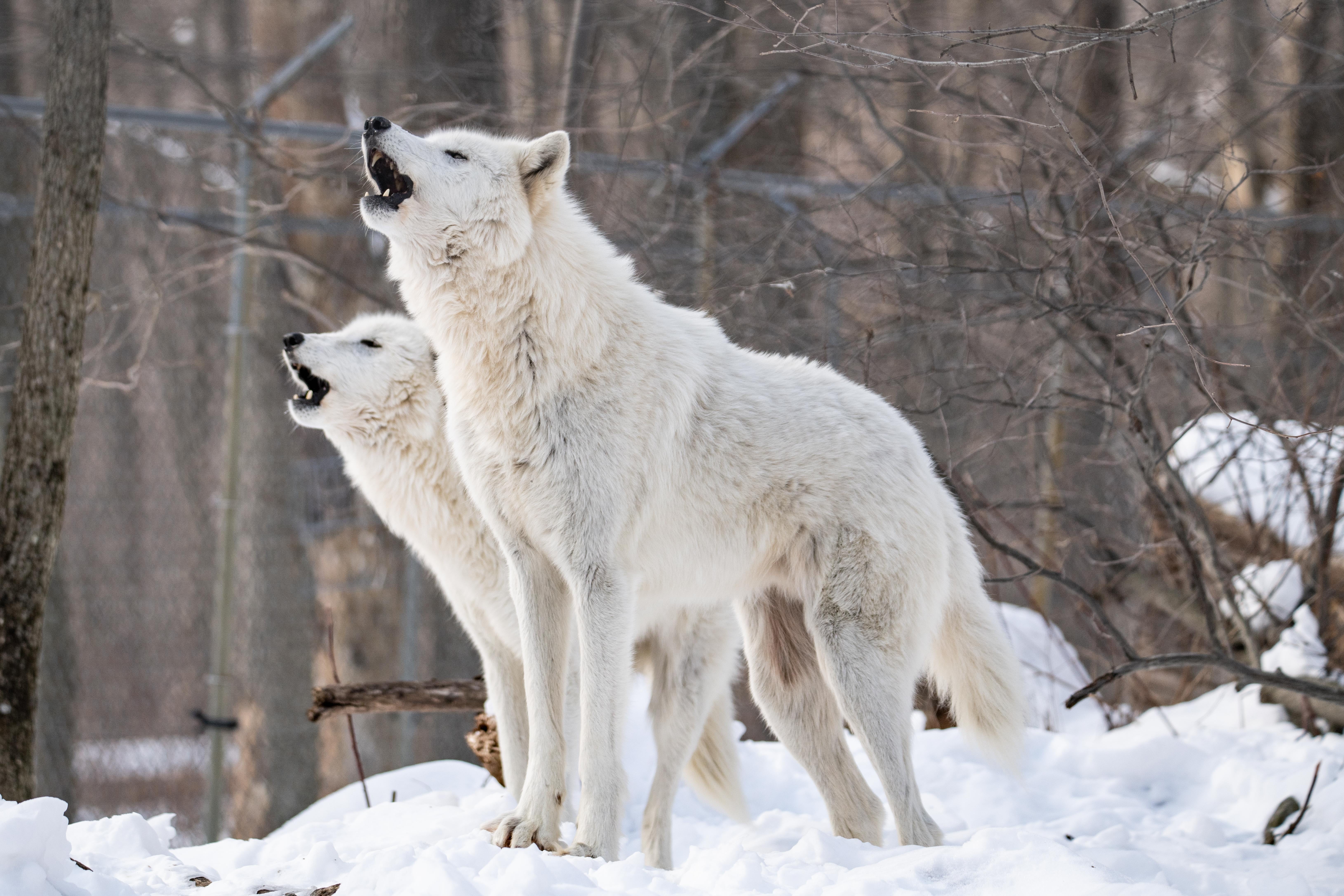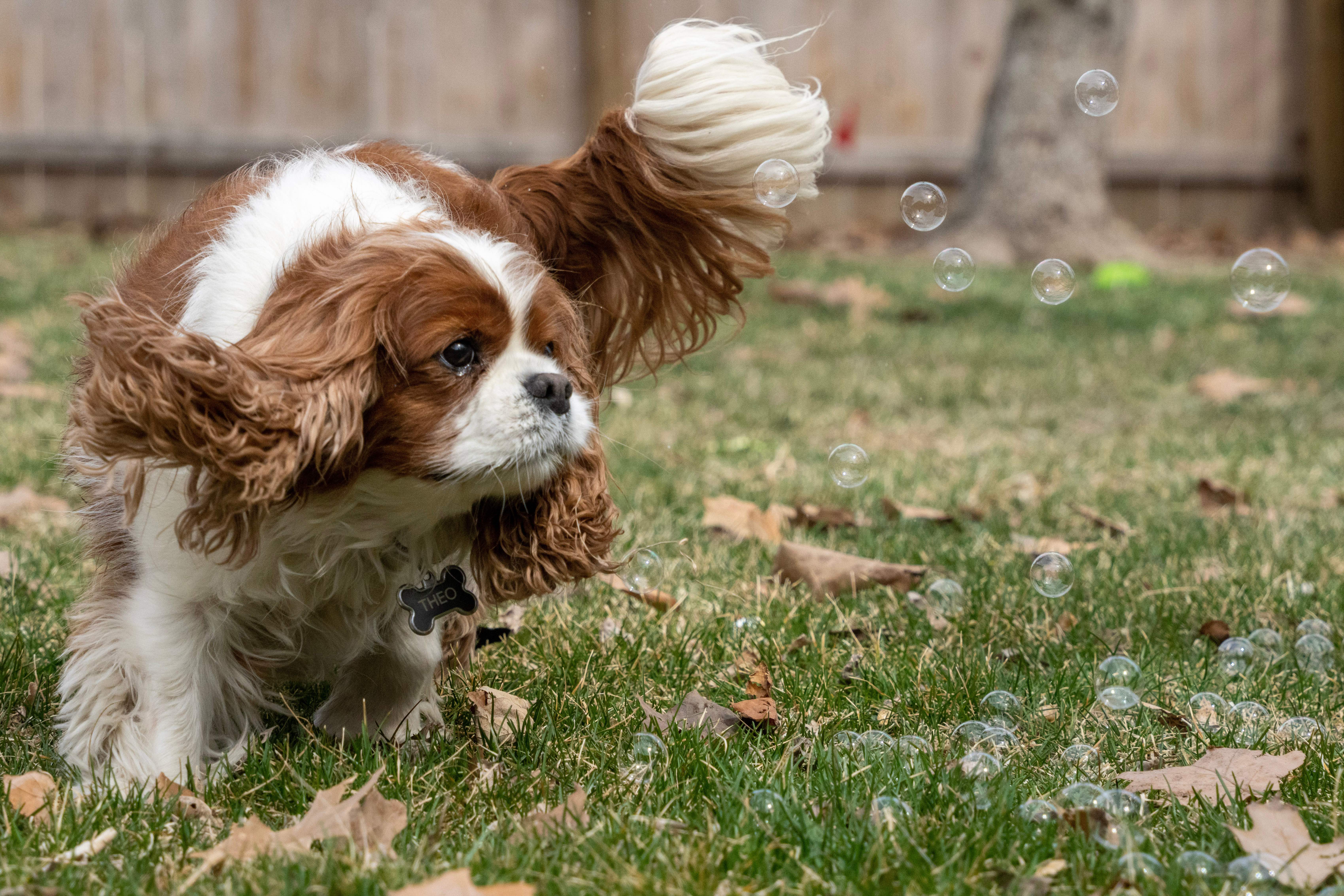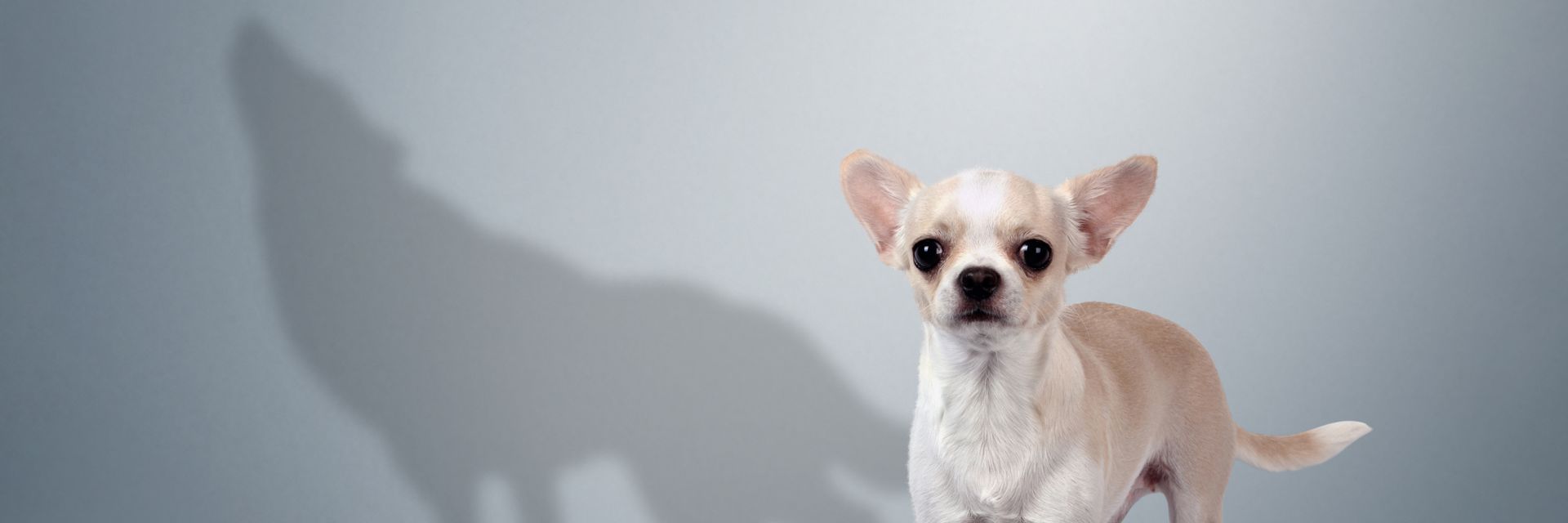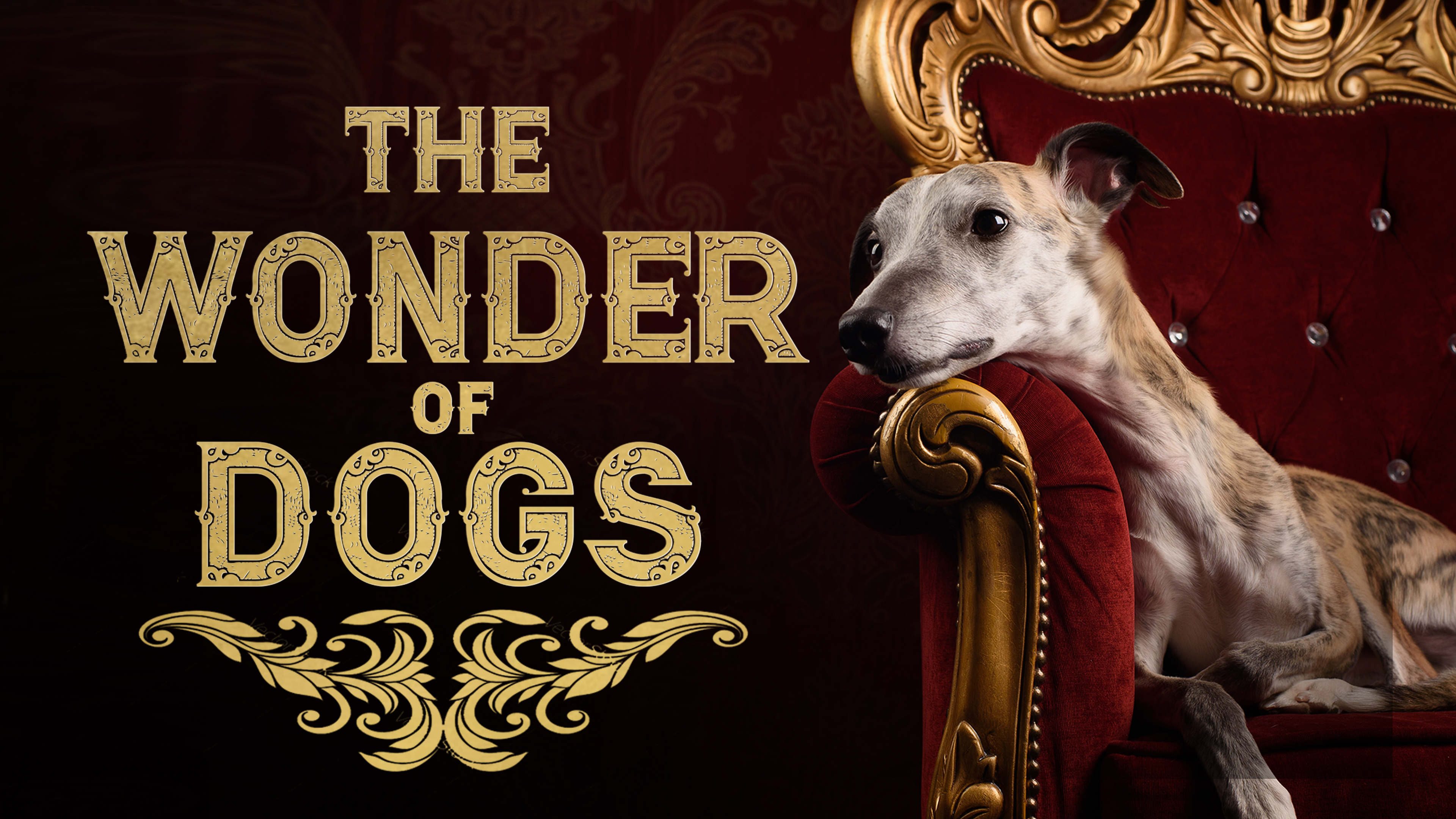Wolves were weaned from the pack to join the human family about 15,000 years ago. What is it like to raise one of these creatures now? Is there still a wolf inside that Chihuahua?
◊
How much of a wild wolf is still in that cute house pet who shares your bed at night and eats out of your hand? Is your dog so acclimated to being cared for and catered to that there’s nothing left of the bloodthirsty carnivore that started the hereditary line we now know as Canis lupus familiaris? Most experts agree that somewhere around 15,000 to 16,000 years ago, the first Pleistocene wolves broke off from their pack, perhaps rejected by their group, and began foraging in the detritus of Stone Age humans’ camps.
While the specifics are still disputed (some researchers believe the human/wolf connection began as early as 135,000 years ago), the DNA evidence is clear: Today’s wolves and today’s domesticated dogs, from Rottweiler to toy poodle, sprang from the same single ancestor species.
To explore the questions arising from this ancestral linkage, I spoke to a typical dog owner in the United States, trying to ferret out how much of his dog’s behavior can be traced back to the traits of its forebears. How much of prehistoric Canis lupus (gray wolf) still lies in the bones, sinew, and appetites of its distant grandchild, Canis lupus familiarise?
For more on the story of canine evolution, check out the MagellanTV documentary The Wonder of Dogs.
‘Still a Pack Animal’ – Does Nurture Affect ‘Natural’ Behavior?
Recently, I spent an afternoon with a five-year-old Havanese (a toy dog closely related to the bichon) and its owner, who, for the purpose of this interview, we’ll call Marvin. He brought home a pup, whom we’ll call Jasper, from a breeder at the age of five months.
Marvin is not a professional dog handler, and Jasper is not a show dog. They are merely among the millions of American families that have dogs as part of their household. Marvin and Jasper live in a residential neighborhood of Los Angeles, and they had just returned from a weekend in a nearby desert resort town.
Clues to dogs’ evolution are in their paws. Larger paws, such as those of the Labrador retriever, assist in excavation; tough pads, as seen in huskies, allow them to stand comfortably on ice for hours.
We began our conversation by discussing the long lineage of domesticated dogs. Dogs have descended in a direct line from wild animals – and, in the context of evolution, 15,000 years is quite a brief time.
I began, “Can you see any traces of wolf behavior in your dog, or has evolution totally wiped them out?”
Marvin replied, “I can see some relations. Jasper is still a pack animal in the sense that I’m his alpha; he looks to me for signals about what’s acceptable or not.

Wolves exhibit pack behavior, including joining in vocalizations. (Source: Timothy, via Adobe Stock)
“He communicates several wolf-like needs – the need to be fed, for sure, and the need to be sociable. He’s also quite alert to who’s dominant in any situation. Normally, he’s submissive to me, and to most other humans. But given the chance, especially with unfamiliar dogs, he will challenge them to see who will dominate whom.”
It’s common to hear the term alpha bandied about in discussions of wolf, as well as dog, behavior. But in the wild, there are no alpha wolves – only fathers, mothers, and their broods.
“How does he behave when you set boundaries? Does he follow your commands?”
Marvin said, “I took him out to [a desert establishment] with an outdoor patio. And I was always within his sight. His human socialization really showed. He stayed in one spot near me and, of course, enjoyed the attention that came from other people who noticed him. Havanese dogs are usually docile, but not always. It was clear he sought my approval when another dog appeared on the patio. He didn’t try to attack, just got more watchful.”
‘Being Himself to be Happy’ – What Does ‘Personality’ Mean in a Dog?
“Thinking back to when you got your dog, do you recall any ‘personality’ traits that were set then and still present today, or are most of his traits due to his rearing by you?”
Marvin replied, “Jasper was very different when I first got him. He seemed sad and upset. For one, he vomited, and his eyes were darting and downcast. I don’t know if he experienced trauma before I got him, but to me, he’s now completely different.
“He’s a self-confident dog now. I think having one ‘boss’ or alpha calmed him down considerably. He’s happy – his eyes perk up, he smiles, and he’s usually wagging his tail.”
“But can a dog really express his feelings through a smile?”
Marvin said, “He seems to be able to mimic a human smile. I don’t know if it’s innate or learned, but he does smile often.”
“How can a dog owner gauge a pet’s happiness or contentment?”
Marvin continued, “Jasper needs to be himself to be happy. He needs to do things he likes; he roams around the property, using all his senses. That seems to satisfy him.”
Many dogs, including the Havanese shown here, are great at offering comfort to humans. (Source: Wikimedia Commons)
Many owners report that their dog’s personality grows to match their own. How does Jasper’s personality “mesh” with Marvin’s, if at all?
“Jasper has a very different personality from his owner,” Marvin starts, then catches himself. “I’m stubborn, too,” he admits. “Jasper picks up on things I don’t like, but his processing is more binary: yes/no, on/off. I can work with conditional reasoning. But,” he finished, “I’m mostly happy, and he is too.”
‘He Wants to Rip Out Their Hearts’ – A Dog and His Prey
Switching topics, I asked Marvin about his dog’s relationship with vermin.
“Jasper’s a mouser,” Marvin proclaimed. “You can see it in how he plays with his toys. He wants to rip out their hearts, kill them again and again.” He continued, “The first night we were away, Jasper was wandering the property and brought back a mouse. He wants to kill, and then present. I think he wants to find prey in order to give his owner something, an expression of empathy, really.”
It seems to be innate for dogs to “add to the bounty” of the owner’s table. Since the line from domesticated dog to wild wolf is a direct one, perhaps there was a time when humans and dogs relied on each other to find, kill, and present their contributions to the evening meal.
Pointers, springers, and water dogs, like Labs, were all bred to assist hunters in Britain in the 18th and 19th centuries. Each has a special skill. The dogs will flush out prey, then either “point” at or “retrieve” fowl and other small game targets for their masters to kill or release, as they see fit.

Some dogs are natural water retrievers – but not all. (Credit: DragoNika, via Adobe Stock)
While “retrieve” is high on Jasper’s skill list, there’s one boundary this Havanese will not cross – water. Marvin says, “Jasper doesn’t like water – he hates pools. He even hates the sound of the ocean, gets anxious when he sees waves. He shakes himself furiously when he’s wet. He starts with shaking his head violently, then his body, and finally the tail.”
Are Dogs Naturally Empathetic?
Dogs have a keen sense of smell. There are dogs in research laboratories around the world who have been taught to isolate the “smell” of cancer. They have been shown to be able to discern an imperceptible “aroma” of cancer cell growth both in sample tissue and in living test subjects. As dogs evolved to be human helpers, these kinds of tasks are now natural; retrievers are being trained as service dogs to assist disabled people with their domestic tasks.
Marvin’s Jasper is also highly attuned to scent. “He can sniff out eggs anywhere; he seems to know when we’re going to make eggs for breakfast, and he loves to lap up whites and yolks, which I sometimes mix with rice to feed him.”
Training makes dogs feel like valued parts of the human “pack.” I asked Marvin if Jasper had any tricks.
“He will sit on command, and he puts his paw up when I tell him to ‘give me five.’” Just like teaching a dog his own name, “everything is repetition,” says Marvin. “It took a while; even with a smart dog, you need at least 20 repetitions per session, reinforcing the lesson with treats.”
It’s tough to know whether dogs are naturally empathetic, or if they have learned to ‘perform’ empathy in their interactions with humans. Humans adapted dogs to tasks, but it seems dogs are willing to adapt, and they’re attentive to humans – much more so than other animal species. But are dogs innately able to interpret human emotions, and then respond appropriately?
“When I’m not feeling well, I lie down,” Marvin says, “and Jasper always aligns himself physically with me, so I can feel his body heat. His presence provides comfort, and he slows his natural body rhythm to match mine.”
It seems dogs need human comfort, and also return comfort to humans.

The Cavalier King Charles Spaniel is an active, gentle, and affectionate toy breed. (Source: Ian for Adobe Stock)
What’s a Dog’s Worth? – ‘He Means the World to Me’
Through nurture, dogs are often known to take on their owner’s temperament. Rowdy people tend to raise rowdy dogs; introverts may select lap dogs, such as the popular King Charles Spaniel, to accompany a quieter lifestyle. We can say that, generally speaking, dogs are in tune with our emotions and eager to please. And this much is scientifically proven: Having a dog makes us humans happier and healthier (in 22 ways!).
To wrap up our interview, I posed a simple question to our dog owner: What does your dog mean to you? The answer I received wasn’t quite so simple: “He means the world to me – he’s like my child. It’s just something that makes me happy. He de-stresses me after a stressful day.
“Jasper is a great companion. He always wants to be involved around you.”
But are these just a collection of innate traits? “No, I don’t think so,” Marvin countered. “To me, it’s emotional, the overall support he offers. And I think he needs me – so he provides that bond.”
Our dogs are our best friends. They’ve evolved, from the wildness of the wolf to the highly socialized, treat-loving companions we’ve fallen in love with. As Marvin says, “They want to be a part of it, care for you, see when you’re sad or happy. They just need you. And you need them.”
Ω
Kevin Martin is Senior Writer and Associate Editor for MagellanTV. Having had a long career as a journalist and communications specialist, he writes on various topics, many in the areas of Art and Culture, Current History, and Space and Astronomy. He is the co-editor of My Body Is Paper: Stories and Poems by Gil Cuadros (forthcoming from City Lights). He resides in Glendale, California.
Title Image: Adobe Stock



